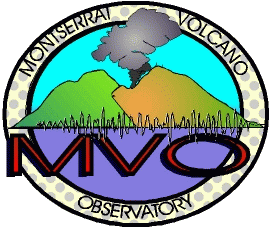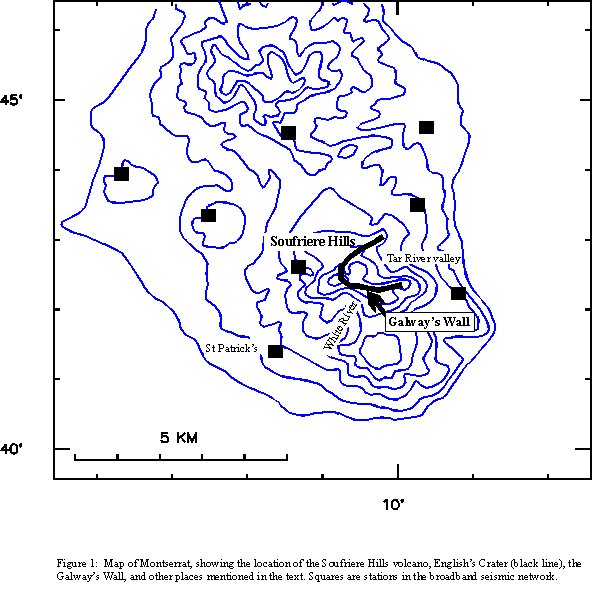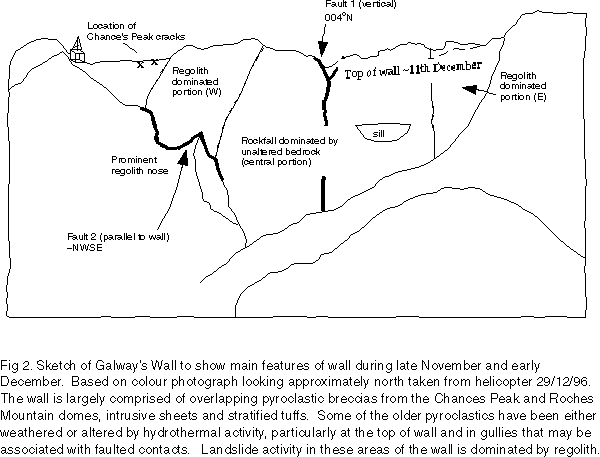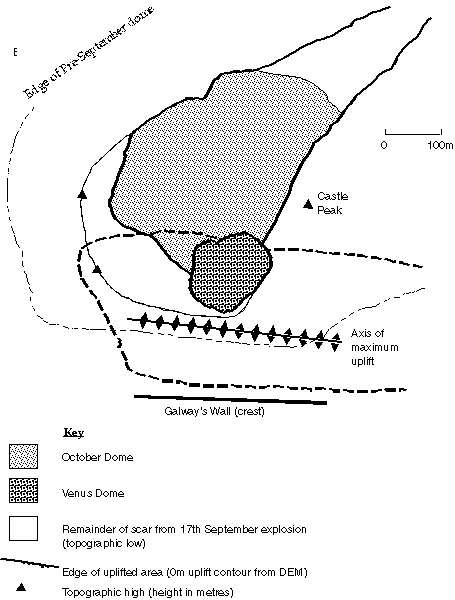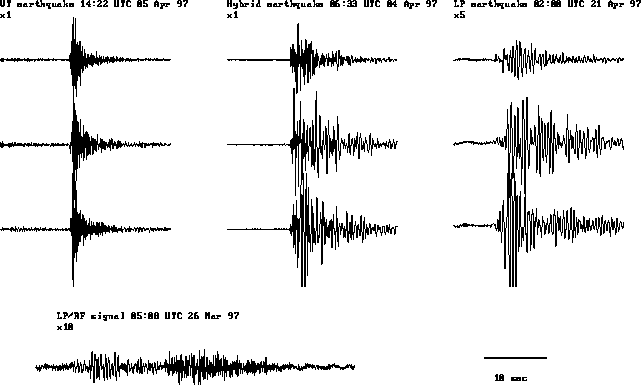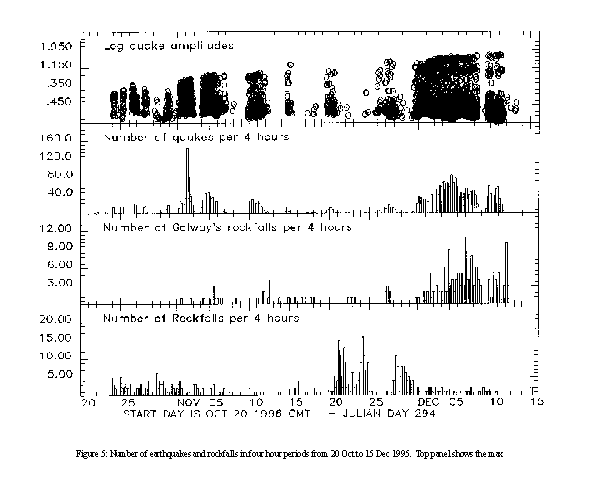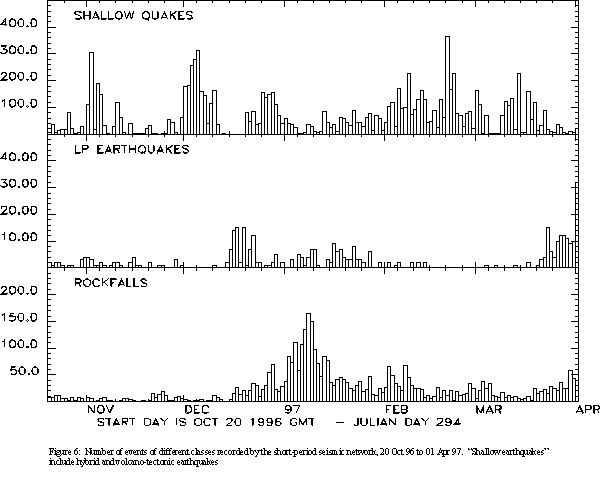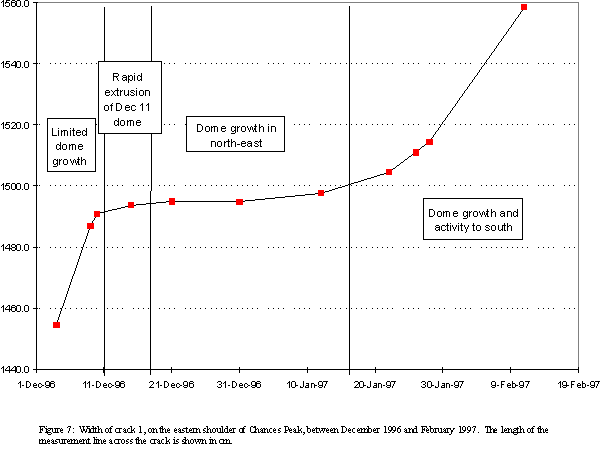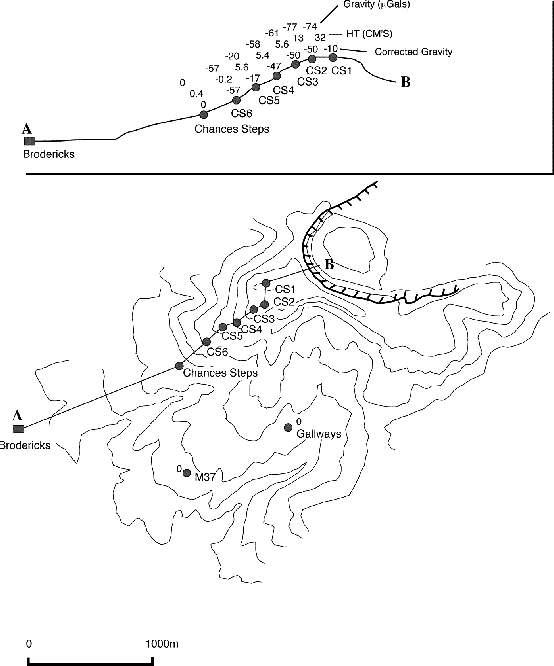6. Discussion
The deformation of the Galway's Wall and the subsequent erosion and
pyroclastic flow production represents one of the most restless phases
during the current eruption of the Soufriere Hills Volcano. Intense
seismic activity was recorded, there was rapid switching in the location
and style of dome growth, and the wall deformed visibly with large
fractures forming across the crater rim and landslide activity from the
outside face of the wall.
The main feature of the seismicity of this period was the sometimes intense
swarms of hybrid earthquakes, which are thought to be due to a shallow
magma-related process, probably beneath the dome. Preliminary studies show
that there is sometimes high correlation of waveforms between different
earthquakes, indicating a repetitive source. The hybrid earthquakes
probably occur when magma pressure in the upper conduit increases. The
correlation between the Galway's Wall landslides and the swarms suggests
that somehow the stress on the wall was increased during the swarms,
although ground shaking by the earthquakes is also thought to have played a
part in increasing the landslide activity.
This is consistent with the intrusion of a body of magma at the base of the
dome. The pre-September dome responded in a plastic manner, because most
of the dome in this area was extruded only 6 months earlier in June 1996
and the high temperature of the dome material prevented a brittle response.
The cold Galway's Wall, however, was stressed and fractured by the
extension associated with the intrusion.
Dome surveys showed that the intrusion and uplift had halted by 13
December, consistent with the cessation of earthquake swarms and landslide
activity from the Galway's Wall. A general slowing of the extension and
shearing of the cracks on Chance's Peak suggested a lessening of the stress
on the crater wall, and this accompanied rapid dome growth.
Enhanced incandescence and levels of SO2 degassing from the pre-September
dome adjacent to the Galway's Wall at this time indicated that a fresh, hot
magma body was close to the surface. During the collapses of 19 December,
tapping of this hot material produced pumiceous pyroclastic flows, prompted
by collapse of the December 11 dome. The rapid ascent of this material
resulted in rapid exsolution of volatiles and consequent expansion of the
magma immediately prior to eruption. The relatively short ascent path to
the surface of the material may have prevented initiation of a vertical
eruption column at this time.
Following collapse of the December 11 dome, growth switched to the eastern
and central parts of the dome and rate of extrusion increased
significantly. It is not clear what prompted the switch in growth activity
on the dome, but the central focus was sustained throughout the period of
rapid growth until late-January and it is likely that a different part of
the upper feeder system was being utilised at this time. A switch back to
growth in the south in mid-March preceded by increased hybrid earthquake
activity and crack deformation appears to represent a repeat of the pattern
of November and early December.
The activity at the Galway's Wall shows that the confining crater walls are
vulnerable to intrusive activity, which can cause deformation and collapse
and allow pyroclastic flows to exploit new routes from the crater. During
this period, there were several rapid switches in the locus and style of
dome extrusion, and this seems to be a characteristic of the current
eruption. In this instance, the wall deformation and eventual erosion
proceeded in slow and predictable stages. However, it is a cause for
concern that the northern and western crater walls could be affected in
similar ways, and any pyroclastic flows in these directions would have far
greater human impact.
List of Tables
- Table 1: Chronology of deformation of the Galway's Wall, November-December 1996
- Table 2: Seismic signals recorded at the Soufriere Hills Volcano
- Table 3: Movements on Cracks 1 and 2 near Chance's Peak.
- Table 4: Summary and Chronology of Changes in Hazard Assessment.
List of Figures
The figures are available in a small image format (usually 600x400 GIF), a large image format (usually 1200x800 GIF), and Postscript
- Figure 1. The location of the Soufriere Hills Volcano Small GIF - Larger GIF - Postscript
- Figure 2. Sketch diagram of the main geological features of Galway's Wall. Small GIF - Larger GIF - Postscript
- Figure 3. Map of English's Crater, showing areas of dome growth and uplift in November and December 1996. Small GIF - Larger GIF - Postscript
- Figure 4. Example seismograms from the MVO broadband network GIF - Postscript
- Figure 5. Number of earthquakes recorded by the broad-band network in 4-hour periods. Top panel shows the maximum amplitude of earthquakes, averaged from the vertical components of all broadband network stations. Small GIF - Larger GIF - Postscript
- Figure 6. Number of earthquakes and rockfalls recorded by the short-period network, October 1996 to April 1997. Small GIF - Larger GIF - Postscript
- Figure 7. Distance across crack 1 on Chances Peak. Small GIF - Larger GIF - Postscript
- Figure 8: Plan and cross section of the Chances Peak radial micro-gravity line. Once relative gravity observed between July and December 1996 is corrected for elevation changes observed over the same time period, the corrected microgravity changes are very small. Given that errors are +/- 10microGals the overall changes are no greater than 40microGals. Small GIF - Larger GIF - Postscript
Montserrat Volcano Observatory
